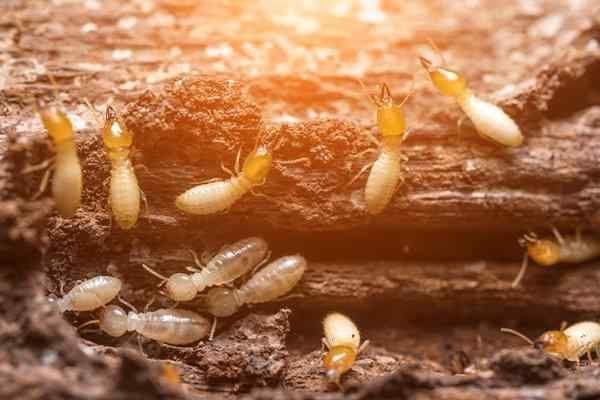Baiting for termites is an effective way to get rid of termite infestations in your home. With proper bait placement and monitoring, you can eliminate termite colonies and prevent future infestations. While professional pest control is recommended, it is possible for homeowners to bait for termites on their own if they educate themselves and follow proper baiting procedures.
Page Contents
What is termite baiting?
Termite baiting involves placing small bait stations filled with termite attractants around the home. When termites find the stations, they eat the bait which contains a slow-acting insecticide or growth regulator. The termites then share the bait with the rest of the colony through their normal feeding/grooming behavior. Over time, the entire colony is eliminated as they are unable to reproduce and die off.
There are two main types of termite baits:
- Above ground termite baits – These visible bait stations are placed around the exterior of the home.
- In-ground termite baits – These are buried around the foundation and monitored through underground tubes.
Can you install termite bait stations yourself?
While termite baiting systems require specific expertise to install properly, they can be self-installed by homeowners who educate themselves and follow directions carefully. The keys to proper installation include:
- Selecting the right locations – Bait stations must be placed in areas likely to intersect with termite activity. This requires understanding termite behavior.
- Following label directions – The insecticide label will specify how many bait stations to use and how far apart to space them.
- Regular monitoring – Bait stations must be checked regularly to ensure termites are feeding on the bait.
As long as these procedures are followed correctly, homeowners can absolutely install termite bait stations on their own. However, the monitoring process requires diligence and you run the risk of poor placement. Using a professional takes the guesswork out of placement and monitoring.
Steps for DIY termite baiting
If you want to tackle termite baiting as a DIY project, follow these key steps:
- Educate yourself – Read all manufacturer instructions for the bait stations and insecticide you select. Understand proper placement guidelines and monitoring requirements before starting.
- Map activity areas – Look for signs of termites, like mud tubes and damaged wood. Target these areas for bait placement.
- Install bait stations – Place bait stations around the exterior foundation and in any problem areas identified. Follow label directions on spacing and amount.
- Inspect & monitor – Check stations at least monthly for termite activity. Refill bait as needed. Keep detailed notes.
- Continue until gone – It can take 3-6 months or more to eliminate a colony. Monitor regularly until all termite activity has ceased.
Pros & cons of DIY baiting
Below is a quick comparison of the potential advantages and disadvantages of trying to bait termites yourself versus hiring a professional:
Pros of DIY baiting
- Cost savings – Buying bait stations and doing it yourself is cheaper than professional installation.
- Convenience – You can install bait on your own schedule instead of waiting for a professional.
- Ongoing monitoring – DIY allows more flexibility for regular monitoring.
Cons of DIY baiting
- Imperfect placement – Lack of experience increases chances of poor bait placement.
- Time commitment – Regular monitoring is essential but time-consuming.
- Risk – Improper use of insecticide baits can put your home and health at risk.
Conclusion
Installing termite bait stations on your own can save money versus professional baiting. However, there are risks if not done properly. Careful research, preparation, diligent monitoring, and strict adherence to label directions are musts for a DIY termite baiting project. Even with the right knowledge, the process is very time intensive. For most homeowners, professional termite baiting is the safest and most effective solution.
